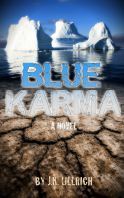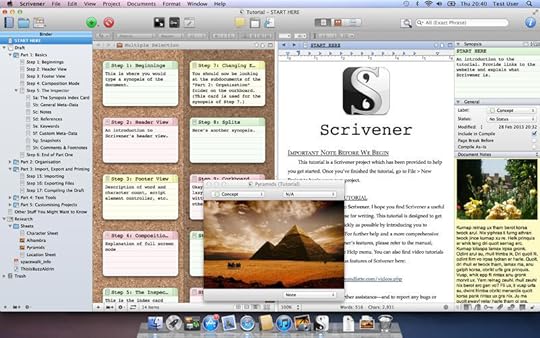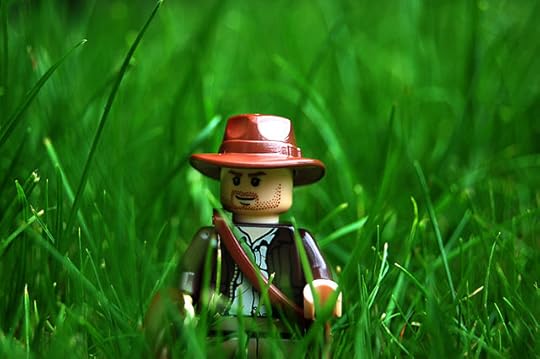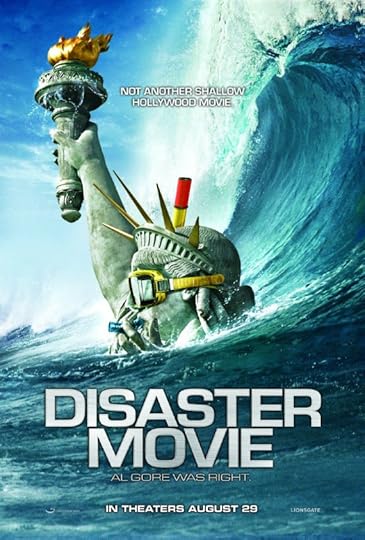J.K. Ullrich's Blog, page 29
June 29, 2015
Story Fuel: The Sixth Extinction
It seems I have an uncanny knack for anticipating environmental crises in the news. I published Blue Karma just as California began making historic changes to its water policy, and mere weeks before NASA data showed us the appalling state of major global aquifers. Now when I begin work on my next book, which explores themes of lost biodiversity and the human impact on other species—I know, I’m a wicked tease, but promise to post the cover and blurb soon—a new scientific paper concludes we’re on the cusp of a sixth mass extinction.
This isn’t the first time scientists have written about the sixth extinction, but the new study published in the journal Science Advances is unique because it used more conservative models than any previous effort and still reached the same alarming conclusion: “The evidence is incontrovertible that recent extinction rates are unprecedented in human history and highly unusual in Earth’s history….If the currently elevated extinction pace is allowed to continue, humans will soon (in as little as three human lifetimes) be deprived of many biodiversity benefits.”
Five distinct events have almost obliterated life on Earth throughout the planet’s history, from ice ages to volcanoes to the notorious meteor crash that killed the dinosaurs. This cataclysmic quintet, known in scientific circles as “the Big Five” mass extinctions, all resulted from naturally occurring phenomena. No such natural disasters are involved in the current extinction period. It flows from the behavior of a single species: our own dear homo sapiens.

My favorite probably-extinct animal, the thylacine or Tasmanian tiger, was the largest marsupial carnivore of the modern era. Farmers encroached on their habitat and hunted them to extinction, shooting the last known wild individual in 1930. The last thylacine, nicknamed “Benjamin”, died in the Hobart Zoo in 1936.
Before you dismiss the study as another alarmist global warming story, you should know that the paper’s estimates didn’t even account for nascent issues like climate change and ocean acidification. It included only the established human contributions like pollution, habitat loss, and animal exploitation. Even within these parameters, the current extinction rate for various animal groups ranged from ten to 100 times higher than normal, meaning as many as three-quarters of animal species could be extinct within several human lifetimes.
If your imagination prefers fractions, a scientist at the University of Manitoba calculated humans now account for a third of land vertebrates when measured by mass. Animals destined for our dinner tables, like cows and chickens, make up most of the other two thirds. Wild animals constitute less than 5% of Earth’s animal mass. As if marginalizing species in this way wasn’t problematic enough, we humans also seize the reins of evolution itself through selective breeding and genetic engineering. It’s a shocking illustration of the impact we have on other species: we hold their fates in our opposable-thumbed primate hands.
The looming question is whether humans will succumb to this newest mass extinction, victims of our own inventions. And if we survive, will the world we create be one that you—or your children and grandchildren—will want to inhabit? My latest literary effort will address such ideas and explore how the combined forces of extinction and evolution might shape tomorrow’s Earth. But even my darkest fantasy cannot compare with the stark reality this new paper presents to us. We may yet have time to salvage both our planet and our future, but that window of opportunity is rapidly slamming shut.
Read the original paper in Science Advances, or thorough overviews from The Guardian and National Geographic.

June 27, 2015
The Indie Author’s Guide to Shameless Self-Promotion
The following is adapted from a post I contributed to a GoodReads group for indie authors.
 It’s been a month since Blue Karma hit digital shelves, and the ensuing weeks spurred my next stage of evolution as an author: from pure writer/editor to publicist. Anyone who thinks publishing an e-book is a “set it and forget it” enterprise is in for a shock. If you really want your book to have a chance at success, you have to become a one-person marketing division.
It’s been a month since Blue Karma hit digital shelves, and the ensuing weeks spurred my next stage of evolution as an author: from pure writer/editor to publicist. Anyone who thinks publishing an e-book is a “set it and forget it” enterprise is in for a shock. If you really want your book to have a chance at success, you have to become a one-person marketing division.
Promoting a book is, in some ways, as much effort as writing the damn thing in the first place. Self-published novels flood markets these days, so distinguishing your book from the endless glut of vampire romance, insipid thrillers, and paradox-laden sci-fi is a tremendous challenge. Still, don’t despair for your indie ebook! If you’re overwhelmed and don’t know where to start, try some of these plays from my (developmental) Indie Author’s Guide to Shameless Self-Promotion:
Freebies. The first step of shameless self-promotion is getting your book into as many hands (or onto as many e-readers) as possible. Four times as many people downloaded Blue Karma from Amazon on the single day I offered it free than paid for a copy in its first month of publication. It may seem contrary to the idea of selling your novel, but it’s an investment. If some of those people who get the book for free give it a positive review or recommend it to a friend, it will earn you back the few lost dollars (and, ideally, more).
Blogging. If you don’t have a blog already, what are you waiting for? Maintaining a website on topics of interest to your target demographic can connect you with potential new readers. For example, since I write primarily speculative fiction, my website features a lot of trending science news and sci-fi discussions, topics I think will appeal to the type of readers who might be interested in my novel (and since they interest me, too, writing fresh material is much more enjoyable). An established blog is also the perfect platform for generating advance interest about your next book. The trick is to avoid pure advertising. No one wants to read that!
Book review blogs. Browse GoodReads or WordPress and you’ll find plenty of prolific, well-followed book review bloggers, many of whom are glad to review indie novels. Contact those who feature genres or styles appropriate for your book and offer them a complimentary copy in exchange for their honest review. In addition to their own sites, many bloggers will post their review on hubs like GoodReads, Amazon, and Barnes & Noble, multiplying exposure for your book. I’ve had great success with this method so far. Best of all, it’s introduced me to some thoughtful, interesting bibliophiles whose blogs I truly enjoy browsing in my free time.
GoodReads. With 25 million members and over 20,000 book groups, there’s no better place to build a platform and connect with potential readers. But simply slapping an advertisement in the “Author Promotion” threads won’t do. Find groups dedicated to your genre and start talking. Get involved in some discussions and share some thoughts. Be an active community member, not just a billboard. If you contribute thoughtful posts, people will check out your profile and notice your book. When they tag it to read, their friends will see it. And so on.
Persistance. Few things are more discouraging than seeing your Amazon sales chart flatline. But how long did you spend writing your book? Blue Karma took me over a year. After that, a few months’ launch time doesn’t seem so onerous. We’d all love the overnight bestseller, but that’s not realistic. Accept that it’s going to take longer than you’d like to build momentum for your book. Don’t be daunted, and don’t give up.
This is by no means an exhaustive list of options; there are many promotional avenues I haven’t yet explored. Blue Karma is presently an e-book exclusive, which precludes opportunities like book signings at my local library or bookshop. I’ve also elected to pursue only cost-free marketing methods for the time being; I want to see how much I can accomplish with my own effort before I experiment with paid advertising.
It will be a while before I can assess accurately whether my strategy proved successful. Shameless self-promotion is a brave new world for me, and probably for most other indie authors making their debut. But so far the tactics discussed here seem to be working for me, so hopefully they’ll help you, too!

Review of “Blue Karma” at The Leaning Tower of Tomes
 I recently sent a promo copy of Blue Karma to fellow Catan queen Mallory at The Leaning Tower of Tomes book review blog, and just posted her review. I’m thrilled to read how much she enjoyed it, as well as her thoughtful commentary on various aspects of the story. Mallory, thank you! She’s reviewed dozens of other YA novels as well, so if cli-fi isn’t your taste, check out her other picks for your next read.
I recently sent a promo copy of Blue Karma to fellow Catan queen Mallory at The Leaning Tower of Tomes book review blog, and just posted her review. I’m thrilled to read how much she enjoyed it, as well as her thoughtful commentary on various aspects of the story. Mallory, thank you! She’s reviewed dozens of other YA novels as well, so if cli-fi isn’t your taste, check out her other picks for your next read.

June 24, 2015
Top 5 Wednesday – Characters You Wish You Could Drown
 What better topic for me to jump into Goodreads’ Top 5 Wednesdays? I’ve always been a vindictive reader, taking my character loyalties and vendettas very seriously (if you’re read my novel Blue Karma, you might conclude that I’m a rather vindictive author as well; not shy about doling out punishments)! It was hard to select five, but here’s a few that persist in my literary memory, in no particular order:
What better topic for me to jump into Goodreads’ Top 5 Wednesdays? I’ve always been a vindictive reader, taking my character loyalties and vendettas very seriously (if you’re read my novel Blue Karma, you might conclude that I’m a rather vindictive author as well; not shy about doling out punishments)! It was hard to select five, but here’s a few that persist in my literary memory, in no particular order:
Dolores Umbridge, Harry Potter and the Order of the Phoenix
Hem hem! In some ways the High Inquisitor of Hogwarts makes a better villain than Voldemort, because we’ve all known revolting bureaucrats just like her. Under the political scheming, brainwashing campaigns, and artificial sweetness—which are bad enough—she proves willing to harm the children under her care. Every time I read the book, I hope she’ll choke on one of her fussy china cups of tainted tea.
Nathan Price, The Poisonwood Bible
This heartless fire-and-brimstone preacher thinks he can bend another culture to his will. Determine to convert a Congo village, he risks his children’s lives in a period of civil unrest rather than abandon his self-imposed religious mission. Local people refuse his attempts at river baptism for fear of crocodiles; if only one of the grinning reptiles had gotten hold of Nathan instead!
Bertha Dorset, The House of Mirth
This vicious socialite should’ve fallen off her yacht on that fateful European cruise, before her slanderous accusations caused heroine Lily Bart’s tragic downward spiral. Anyone who thinks mean girls are a contemporary phenomenon has never read the “novel of manners” genre.
Overseer Mardsen, Lyddie
I read this YA historical novel about the Lowell Mills many years ago, and hated this character so much I still remember him acutely enough to include him on this list. A lecherous man who sexually abuses the young girls in his factory deserves way worse than a lungful of water.
Half the cast of the A Song of Ice and Fire series
Melisandre…Ramsay Bolton…Cersei and Joffrey Lannister…it would be quicker to list the characters in this series I wouldn’t want to drown. All are complex and engaging, to be sure, but horrible people. Thankfully author Martin has proved perversely creative in his character demises; I look forward to seeing these wretches get their comeuppance, if he ever finishes the next book!
Check out the Goodreads group for Top 5 Wednesday to join in the fun with other “Wednesday-ers“!

June 21, 2015
“The Martian” becomes a movie!
I’d been meaning to post a review of The Martian by Andy Weir for the last few months, but hadn’t gotten around to it. Now I get to write something even more fun: a fangirl’s thoughts on the movie adaptation! *SQUEAL* Weir’s enthralling novel hits the big screen in October, and the trailer looks fantastic.
 The book’s simple premise belies its sophistication and charm. When an accident in a storm strands astronaut Mark Watney on Mars, he must survive on his own ingenuity until a rescue attempt can be made. Watney’s voice is immediately likable. Despite his desperate situation–or perhaps because of it–some of his narration is laugh-aloud funny. I felt like I was right there with him on the red planet, listening to bad disco music while driving around in a rover. Never have I read a book that managed to make physics equations so engaging and mathematical computations so dire. The Martian is science fiction in its most literal form: a story drawing on hard, factual science. Weir’s scholarship in this regard impresses. Some of the scenes back on Earth, where NASA races to orchestrate Watney’s rescue, are a bit predictable and slow, but do not detract from the story’s gripping pace. When I finished the book, I turned to my Laddie and said “wow, this would make a great movie!”
The book’s simple premise belies its sophistication and charm. When an accident in a storm strands astronaut Mark Watney on Mars, he must survive on his own ingenuity until a rescue attempt can be made. Watney’s voice is immediately likable. Despite his desperate situation–or perhaps because of it–some of his narration is laugh-aloud funny. I felt like I was right there with him on the red planet, listening to bad disco music while driving around in a rover. Never have I read a book that managed to make physics equations so engaging and mathematical computations so dire. The Martian is science fiction in its most literal form: a story drawing on hard, factual science. Weir’s scholarship in this regard impresses. Some of the scenes back on Earth, where NASA races to orchestrate Watney’s rescue, are a bit predictable and slow, but do not detract from the story’s gripping pace. When I finished the book, I turned to my Laddie and said “wow, this would make a great movie!”
In a few months, we’ll find out if this is true. The first trailer for The Martian hit all the right notes with me. I was thrilled to see Matt Damon cast as Watney. Not only is he one of my favorite actors, when I was reading the book Watney’s character looked and sounded a lot like Damon in my imagination, so I can’t think of a better choice. A host of other top-notch performers round out the ensemble, including Jessica Chastain, Jeff Daniels, and the perpetually underrated Sean Bean. Ridley Scott’s directorial style promises an appropriately epic scope for the story. If the full film lives up to the teaser (and how many of them do, honestly?) it could depose Interstellar as breathtakingly-realistic-space-drama of the decade.

Yes, Matt/Mark, I’m counting the days until the movie’s release, too!
If you haven’t yet read The Martian, what are you waiting for? You’ll gobble up the book in just a few days and spend the rest of the summer in eager anticipation of the movie. I don’t often get the pleasure of seeing a favorite novel on screen, and this fall I get to enjoy at least three: Mockingjay, In The Heart of the Sea (which I would see even if it weren’t based on an amazing book, because Chris Hemsworth *SWOON*) and now The Martian. It’s going to be a great winter film season!

June 20, 2015
Real-Life “Engees”: Record Numbers on World Refugee Day

A protester’s sign in 2007 is proving prophetic.
Today the United Nations (U.N.) recognizes World Refugee Day, bringing attention to the plight of 60 million people worldwide who have been forced to flee their homes. One in every 122 humans is displaced or seeking asylum, according to the U.N. It’s not only international conflicts driving refugee numbers to this new record: an increasing number of people are victims of environmental disasters.
My novel Blue Karma explores the dilemma of fictional “engees”, a portmanteau of the phrase “environmental refugee”. I may have made up this term, but the problem referenced is far from imaginary. An article appearing on Greenpeace’s website discusses the struggles people around the globe already face as drought, cyclones, and other climate events threaten their homes.
You don’t have to be Angelina Jolie to recognize the terrifying scope of this humanitarian crisis. Wars we wage on one another cause enough displacement and suffering: let’s not exacerbate it with a war against our own planet.

20% off Scrivener software
Last month I downloaded the free trial of Scrivener to help me format Blue Karma for publication. It proved to be a fantastic tool not just for compiling ebooks, but for writing in general. I’ve already begun drafting my next novel in Scrivener and it has transformed my writing experience: gone are the scattered documents of notes and scenes, the clunky 300-page manuscript that takes forever to scroll through. Now my project is easy to organize and rearrange. The efficiency expedites my writing, and the orderliness makes my obsessive-compulsive German heart sing.

Isn’t this better than juggling dozens of disparate documents as you write your novel?
So I ponied up for the registered copy, but not without browsing for a coupon code first (aforementioned German heart also loves frugality). I found one that gave me 20% off! I don’t know how long the offer will last, but if you’ve ever been tempted to try Scrivener, now’s the time to do it. Type in promo code WORDSWITHJAM at checkout to put a great piece of productivity software on your computer and an extra $9 in your pocket. I’m still learning to use the many fine features of Scrivener, but I’ve devised several formatting hacks that I hope to share with you soon!

June 19, 2015
Indiana Jones and the Plot Outline of Doom
You might be wondering why, after last week’s blitz of postings, I’ve kind of fallen off the grid. I promise there’s a good reason: I’ve focused my writing time this week on starting my next novel. That’s right! My sophomore effort is officially underway. Cover reveal and teaser coming soon, but I want to get the first few chapters drafted first. I need to make sure this idea is going to fly before I commit to it publicly. (Thankfully for my Laddie and me, my commitment issues are exclusive to writing and don’t apply to personal relationships!)
One thing helping me a great deal is a lesson I learned from writing Blue Karma: advance chapter mapping. My debut novel took a year to complete because I didn’t have a clear plan. The first few chapters were solid, and I knew how I wanted it to end, but the middle was a shapeless haze of events. “Um…so they go to California and…some stuff happens….”. Criminally inefficient! Moonlight novelists like me (and possibly many of you) don’t have the luxury of discovering our plots through exploratory writing. Writing time is at a premium, and we can’t afford to waste it on dead-end subplots or extraneous scenes that won’t survive the first revision. Writing a story is always an adventure. The author becomes a literary Indiana Jones, blazing through unknown territory in search of fortune and glory (and five-star book reviews). Every adventure brings some surprises; that’s part of the fun. But a little planning makes for a much smoother journey.

Know what’s even worse than snakes, Indy? Writing yourself into a dead end because you didn’t map your novel’s plot!
Indy knows the temple lies somewhere in the rainforest, but doesn’t know exactly how to get there. Should he spend weeks wandering the jungle, hoping he’ll eventually stumble upon the site? Not if he wants to snatch the treasure out from under the Nazis’ Aryan noses! He needs to fly over the terrain and identify which direction to go before he starts hacking a machete trail.
Some of you may be that sub-species of writer referred to in technical terms as “seat-of-the-pants” writers. If it works for you, great! However, most of us can improve our efficiency with a little structure. No excruciating detail (unless you belong to that other sub-species, the obsessive outliner) just a blueprint of the plot mechanics. For my new project, I listed the chapters in chronological order and jotted a few sentences about the events in each one. The completed map provides an overview of the story as a whole. Defining each individual chapter precludes vague spots like those in my sketch for Blue Karma. Each chapter must have a purpose and elide with the chapters before and after it.
Indy stands at the head of a bridge spanning a perilous gorge. He can see the bridge’s end on the far side of the precipice, and a few planks ahead of his feet, but fog obscures the central span. Are any boards broken or missing? Yawning gaps over the crocodile-infested river below? Wouldn’t it be nice if Indy could see where he was going?
If Indy’s bridge if your story, each plank is a chapter connecting beginning to end in a logical chain of events. I’ve found it helpful to ensure each plank is sound before I commit to the crossing. It was tempting to charge headlong into my project—I had the first three chapters all but written in my head, and knew approximately where to end—but I took this approach with Blue Karma and wound up completely rewriting a full third of the manuscript. I like to think I learn from my mistakes.
So far the chapter map has served me well. I cracked out a lengthy first chapter this week with no issues and feel confident about the story’s direction. A chapter map also makes it easier to set goals and measure progress. I spent several weeks sulking in the middle of Blue Karma because I felt stuck and didn’t know how I’d connect what I’d already written to the necessary ending. It took a lot of effort to write myself out of a rut. This time I’m armed with a fully operational outline, so I have no excuses not to meet my self-imposed deadlines. Only my own willingness to work stands between me and fortune-and-glory. Step on it, Short Round!

June 14, 2015
Story Fuel: Philae Phones Home
Late last year I wrote a post about the Philae lander, the first probe to land on a comet. After a ten-year journey through space as part of the Rosetta mission, Philae’s bumpy touchdown on comet 67P/Churyumov-Gerasimenko left it in a ravine that shadowed its solar panels. Unable to recharge, the lander transmitted data to Earth for about 60 hours before it ran out of power. Scientists feared Philae–and all the experiments they’d hoped the lander could conduct–might be a lost cause.
But  the European Space Agency says Philae contacted Earth for over a minute yesterday, its first communication since going dark in November. Comet 67P has moved closer to the sun, which may allow Philae to resume generating power. Although the lander’s precise location on the comet remains undetermined, a “good morning” message is an encouraging sign the Rosetta mission may yet be completed.
the European Space Agency says Philae contacted Earth for over a minute yesterday, its first communication since going dark in November. Comet 67P has moved closer to the sun, which may allow Philae to resume generating power. Although the lander’s precise location on the comet remains undetermined, a “good morning” message is an encouraging sign the Rosetta mission may yet be completed.
Designed to analyze comet’s ice and carbon composition, Philae will collect data to help determine whether comets provided source material for life on earth. With Philae out of hibernation, scientists have already downloaded a wealth of historical data from the lander’s first days on 67P, such as these striking photos of the comet’s landscape. What new astronomical sight–and insights–might it reveal next?
Read more about Philae’s awakening from The Guardian and the BBC.

June 10, 2015
Cli-Fi at the Movies: My Guest Post for “The Cli-Fi Report”

Climate change in the movies: a handy excuse for disaster effects
Dan Bloom, originator of the term “cli-fi” and curator of The Cli-Fi Report website, contacted me last week and asked me to write a guest post discussing cli-fi in Hollywood. I was honored to contribute to his project, and what a fun topic to explore!
I minored in film/photography in university, so I have tremendous affection for cinema. Cli-fi currently gets little more than a cameo role in most mainstream movies, but with the rising popularity of the genre, that might be slowly changing. The movie rights for Blue Karma are up for grabs… ;-)
Check out my guest post for more!




